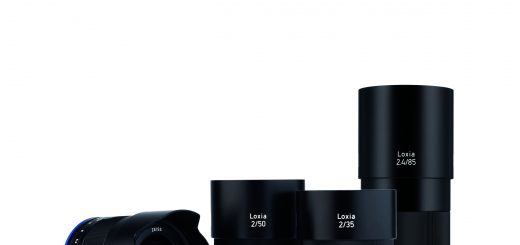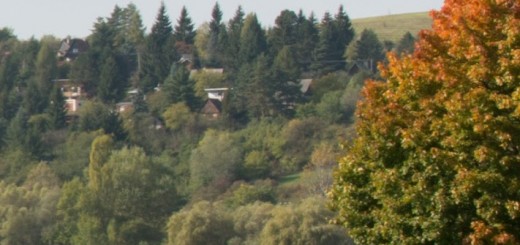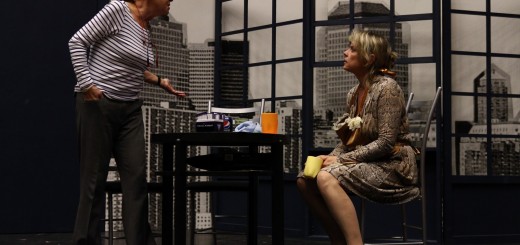The last test published in my previous post, shown that using native mounts slow lenses (55-210 and 50-200) requires high ISO to achieve acceptable shutter speeds. Using AF in such situations wasn’t very effective, and enabling AF tracking function, makes the number of shots in a burst rather low.
Therefore I decided to use faster lenses to repeat the effort and see if the result will be any better.
Just reminding you – lighting conditions in this test are one of the toughest.
Now, I don’t have any longer native mount fast lenses for either camera, so I went with two legacy lenses more or less comparable.
NX 200 got a very nice Zeiss Distagon 50mm f1.4, While NEX 7 had to suffice with a Canon FDn 50mm f1.2.
Problem with MF lenses is that… well, they requires me to achieve the focus…
Being no professional photographer I took a while to think it over.
In advance I knew the following:
a) My subject (my dear son :-)) is usually between 6m to 10m from me when playing.
b) I need to use 1/320s to 1/500s to be more or less save from motion blur, when he is in move.
c) I should use the advantage of high speed bursts (10 per Sony and 7 per Samsung)
d) I will shot in RAW. (for better PP possibilities)
If I go wide open at f1.4, I will be able to keep ISO low and shutter speed quite high. So far so good. But than, I don’t trust my skills much, that I would be able to follow at all the subject by turning the focus ring. That method (following the subject) needs lot of experience and skills, and I am sure, top sport photographers could use it effectively, but in my situation I couldn’t rely on it.
Using the DOF calculator instead give me those figures:
With 50mm lens and f2.8 at 10m distance I should have slightly above 4,74m of effective DOF. At 6m it is 1,65m.
Now, that sounds encouraging. And that was the reason why I decided to go with a 50mm lenses instead of fast 85mm which I could (and will, as I am curious) use as well.
Because with 85 mm and f2.8 I will get only 1,56m at 10m distance and 0,56m at 6m distance.
Considering the high pixel count on both cameras, I decided to use cropping abilities instead of a longer focal length, that would cause more blurry shots.
My settings and method was than rather simple…
a) I made a test shot to adjust manual exposure.
b) ISO 400 give me shutter speeds between 1/320s and 1/400s. That should be enough.
c) I set the cameras at high speed drive and resolution at maximum RAW/Fine jpeg. Excluding JPEG will help the speed, but I want to see what cameras are able to do in terms of processing power.
d) I pre-focused on the tennis ball at the distance that I expected my subject to move around.
e) All that means, that I had free hands and great feeling to focus on a composition and a moment, instead watching for the focus all the time.
Results were better than with the slow AF native mounts lenses, in terms of achieved maximum sharpness, noise and mainly keepers rate. And the feeling was kind of Point and shoot, which is for once – nice.
I succeed to get over 70% of keepers, checking the focus in between, when my subject moved bit more forward or backward.
Here are 100% crops of the burst (only 6 from Samsung’s 8 and Sony’s 10 shots are selected for the size reasons).
Crops are not sharpened and noise is not reduced in this samples.
As you can see, the noise on those high pixel density cameras is still pronounced at ISO 400, but much better than in the previous test 1600 ISO. The sharpness is good, not excellent, but very acceptable. Slight motion blur and the fact that I am working within DOF of acceptable sharpness and not a maximum one, should also be taken into consideration. Anyway, for a reasonable print size, this results are fairly good.
Next are 2 post produced shots resized to 1920px width for the screen, but the original sizes exceed 4000 px width at 240dpi, that is good for A3+ prints.
One thing to mention is a processing speed. While with Sony NEX 7 I had to wait only aprox. 5-6s for buffer to get free, Samsung NX 200 at this image resolution settings, took long aprox. 40s to do the same. This is significant advantage of the NEX 7!
Just one more picture to show cropping abilities.
Following image despite rather big crop has still almost 3000px width (240 dpi) and the preserved detail still looks very good to me. There is a bit more noise as per ISO 800, but it shouldn’t shows up in the prints up to A4.
I hope that most of you would agree, than taking in consideration my previous test post, I can conclude, that using fast MF lenses in such a difficult lighting conditions – gives better results than native mounts slow alternatives.
Next time, I will try my Canon FD 85 f 1.8 and Samyang (EF mount) 85 f1.4, to see if I can do any better.
Meanwhile, I will made a fast field test of just received Kiron FD 28 f2, on NEX 7 and NEX 5n, as that is one of the most affordable fast, wide angle lenses that can be mounted on the NEX system.
If you have any questions, suggestions or test requests, just throw it in comments. I will do my best to come with an answer.
Thanks for looking.



















Hi, nice reviews…
I have just one simple question.
how do you rate those sensor (NEX7 and NX200)?
Considering the sensor quality, performance and features, which one would be better?
Thanks…
Hi Alex, I would dare to say that Sony NEX 7 has a more advanced sensor in terms of high ISO performance and it preserves better highlights but not shadows than NX200. This is however only my non-scientific observations of my samples, so take it with a grain of salt.